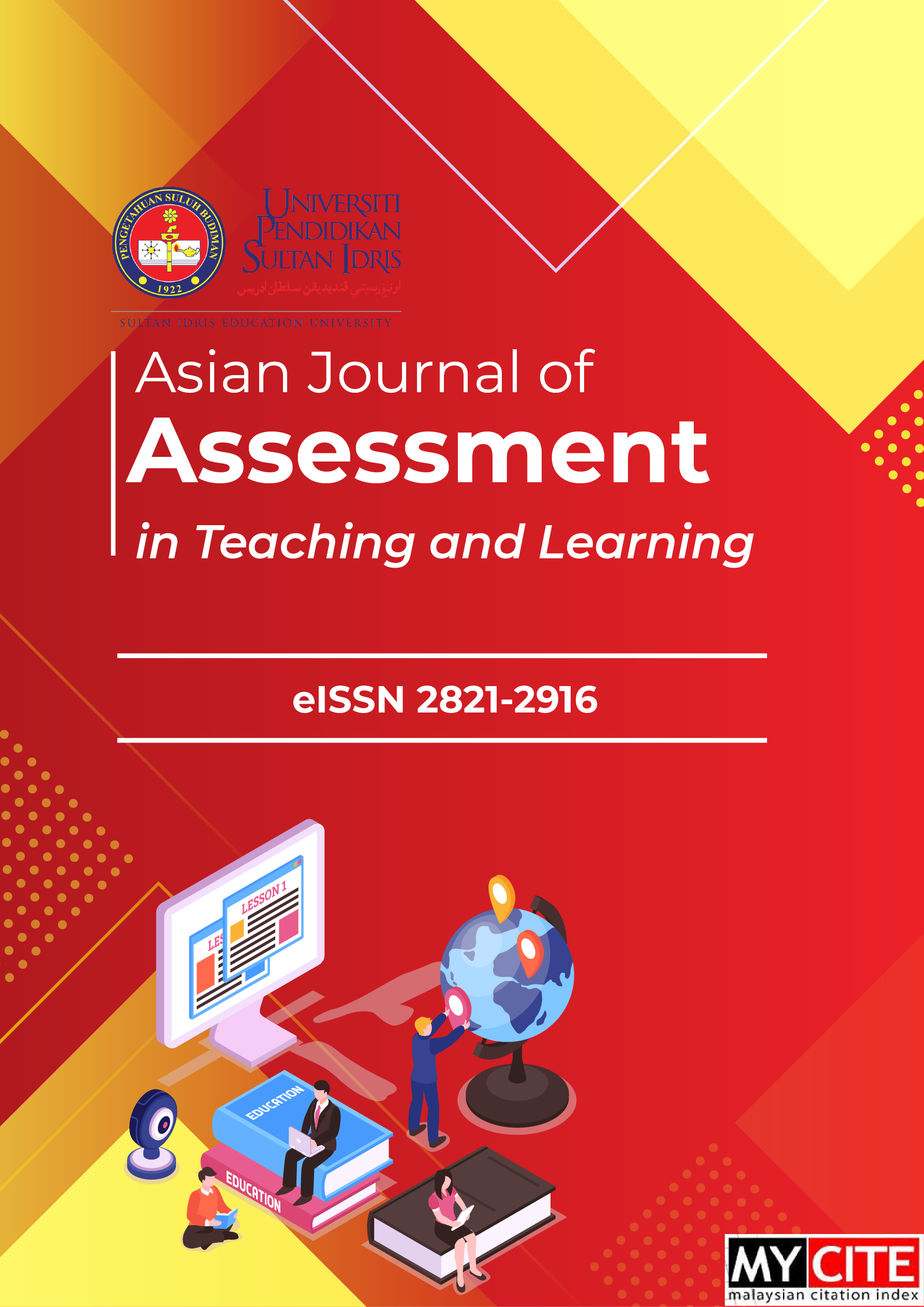Development of PISA-Like Mathematics Tasks Design of Change and Relationship Content to Measure Mathematical Representation Skills
DOI:
https://doi.org/10.37134/ajatel.vol9.no1.3.2019Keywords:
change and relationship, design, PISA, representation, assessmentAbstract
The low ability of students to solve PISA math problems can be seen from the results of the PISA study published by the OECD, 2015 placing Indonesia in position 63 of 70 countries. Therefore, it is necessary to develop PISA math problems, especially in change and relationship content to improve mathematical representation skills. This research is a type of development research by adapting the Tessmer development model. This research was conducted in two stages, namely the preliminary stage, namely preparation and design, then the formative evaluation phase which included self evaluation, prototyping, small group, and field tests. This research is limited to the prototyping. The subjects of this study were students of SMK Diponegoro Depok, Indonesia. The instrument of data collection consists of observation guidelines, interview guidelines, documentation sheets, and questionnaires. Data is analyzed by qualitative techniques. This study produced PISA-like mathematics tasks that were suitable for the needs of students in the era of globalization. This question is designed to measure the ability of mathematical representation. This research can be expanded at the development stage of small group dan field test. This study aims to analyze the needs of developing the PISA-like mathematics tasks of change and relationship content.
Downloads
References
Ahyan, S., Zulkardi, Z., & Darmawijoyo, D. (2014). Developing Mathematics Problems Based on PISA Level of Change and Relationships Content. Journal on Mathematics Education, 5(1), 47-56.
Ainsworth, S. (2006). DeFT: A conceptual framework for considering learning with multiple representations. Learning and instruction, 16(3), 183-198.
Asmara, A. (2014). Mathematical Representation Ability And Self Confidence Students Through Realistic Mathematics Approach. Proceeding in International Seminar on Innovation in Mathematics and Mathematics Education 1st ISIM-MED 2014 “Innovation and Technology for Mathematics and Mathematics Education” Department of Mathematics Education,Yogyakarta State University Yogyakarta.
Bruner, J. S. (1966). Toward a theory of instruction (Vol. 59). Harvard University Press.
Cai, J., & Lester Jr, F. K. (2005). Solution representations and pedagogical representations in Chinese and US classrooms. The Journal of Mathematical Behavior, 24(3-4), 221-237.
Chen, M. J., Lee, C. Y., & Hsu, W. C. (2015). Influence of mathematical representation and mathematics self-efficacy on the learning effectiveness of fifth graders in pattern reasoning. International Journal of Learning, Teaching and Educational Research, 13(1), 1-16.
Hwang, W. Y., Chen, N. S., Dung, J. J., & Yang, Y. L. (2007). Multiple representation skills and creativity effects on mathematical problem solving using a multimedia whiteboard system. Journal of Educational Technology & Society, 10(2), 191-212.
Julie, H., Sanjaya, F., & Anggoro, A. Y. (2017, September). The student’s ability in mathematical literacy for the quantity, and the change and relationship problems on the PISA adaptation test. In Journal of Physics: Conference Series (Vol. 890, No. 1, p. 012089). IOP Publishing.
Lewis, A. B., & Mayer, R. E. (1987). Student’s miscomprehension of relational statements in arithmetic word problems. Journal of Educational psychology, 79(4), 363.
Mevarech, Z. R., & Fan, L. (2018). Cognition, Metacognition, and Mathematics Literacy. In Cognition, Metacognition, and Culture in STEM Education (pp. 261-278). Cham, Switzerland: Springer.
National Council of Teacher of Mathematics. (2000). Principles and Standards for School Mathematics. Reston, VA: NCTM.
Nizar, H., Putri, R.I.I., & Zulkardi, Z. (2018). Development of PISA-Like Mathematics Problems with Football and Table Tennis Contexts in The 2018 Asian Games. Journal on Mathematics Education, 9(2).
Noto, M. S., Hartono, W., & Sundawan, D. (2016). Analysis of students mathematical representation and connection on analytical geometry subject. Infinity Journal, 5(2), 99-108.
OECD. (2010). PISA 2012 Mathematics Framework. Paris: OECD Publishing.
OECD.(2017). PISA 2015 Assessment and Analytical Framework: Science, Reading, Mathematic, Financial Literacy and Collaborative Problem Solving, revised edition, PISA. Paris: OECD Publishing.
Ojose, B. (2011). Mathematics literacy: Are we able to put the mathematics we learn into everyday use. Journal of Mathematics Education, 4(1), 89-100.
Oktiningrum, W., Zulkardi, Z., & Hartono, Y. (2016). Developing PISA-like Mathematics Task with Indonesia Natural and Cultural Heritage as Context to Assess Students Mathematical Literacy. Journal on Mathematics Education, 7(1), 1-8.
Pape, S.J., & Tchoshanov, M.A. (2001). The role of representation (s) in developing mathematical understanding. Theory into practice, 40(2), 118-127.
Rahmawati, D., Hidayanto, E., & Anwar, R.B. (2017). Process of Mathematical Representation Translation from Verbal into Graphic. International Electronic Journal of Mathematics Education, 12(3), 367-381.
Solso, R. L. (1991). Cognitive psychology. Allyn & Bacon.
Stacey, K. (2011). The PISA view of mathematical literacy in Indonesia. Journal on Mathematics Education, 2(2), 95-126.
Van den Akker, J. (1999). Principles and methods of development research. In Design approaches and tools in education and training (pp. 1-14). Springer Netherlands.
Wijaya, A. (2015). Context-based mathematics tasks in Indonesia: Toward better practice and achievement. Utrecht University.
Yanti, Y.R., Amin, S.M., & Sulaiman, R. (2018). Representation of Students in Solving Simultaneous Linear Equation Problems Based on Multiple Intelligence. In Journal of Physics: Conference Series (Vol. 947, No. 1, p. 012038). IOP Publishing.
Yerushalmy, M. (1997). Designing representations: Reasoning about functions of two variables. Journal for Research in Mathematics Education, 28(4), 431-466.
Downloads
Published
Issue
Section
License
Copyright (c) 2019 UPSI Press

This work is licensed under a Creative Commons Attribution-NonCommercial-ShareAlike 4.0 International License.





